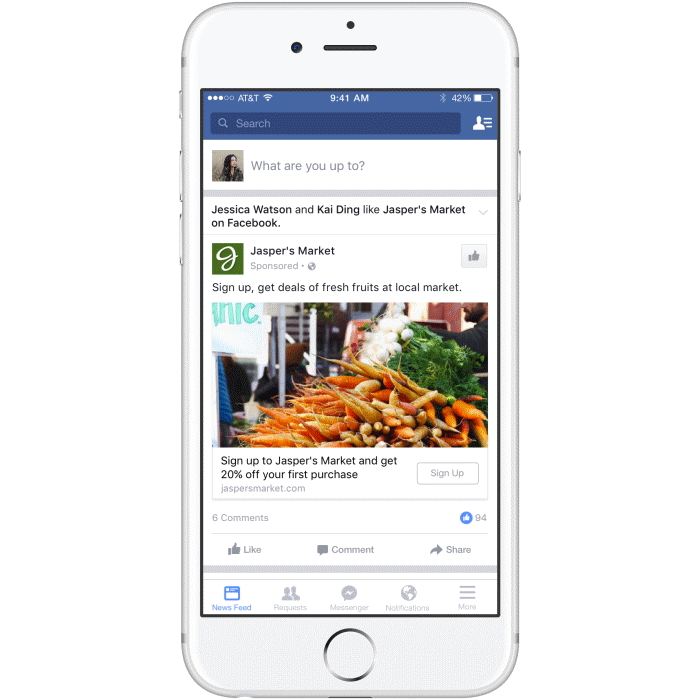Marketing Mondays: Facebook Ads Part 1
According to Facebook, in September of 2018, there were around 1.49 billion active users on the platform daily. Since Facebook has such a large audience, that makes the platform a key player for almost every business out there.
So, how does the Facebook algorithm work? Watch this video to learn more about how Facebook decides what appears and doesn’t appear on your news feed. In order to determine what is relevant content to the user, they use an algorithm system called Ranking.
Ranking uses several different pieces of information to determine what to show the end-user:
- Inventory is all the content that is shared on Facebook from your friends and pages that you like.
- Signals are the information that is available in order for Facebook to choose what content you see. Examples being how old the story is, who posted it, what device you’re on, and more.
- Facebook then uses this information to create predictions about what content you’re likely to engage with. Facebook uses your previous behaviors and engagement to decide what to show you on your news feed.
- The score is the “value” assigned to the piece of content in your inventory. The higher the score, the more likely it is to appear in your news feed.
Now, let’s focus on Facebook ads. The most popular types of Facebook ads are:
Single Image - Single image ads are some of the most versatile ads on Facebook. You’re able to choose your most powerful image with a single link and a small amount of copy and a headline that works in conjunction with the objective that you’ve set for the ad.
Image size: 1,200 x 628 px
Ratio: 9:16 to 16:9
Image size: 1,200 x 628 px
Single Video - Single video ads are similar to single image ads except the image is replaced with a video. Your ad will consist of a video of your choice, a headline, description, and a link depending on what objective you choose for the ad.
Format: .mp4, .mov, .gif
Ratio: 16:9
Resolution: 600 px minimum width
File size: 4 GB max
Length: 120 minutes
Collection (Shopping) - Collection ads are one of the newest advertising options on Facebook and only show up on mobile view at this time. In these ads, you’re able to choose a large cover image while the images below are specific products from your catalog.
Carousel - Carousel ads allow you to choose up to 10 images, videos, or slideshows all in one ad. These ads give you the flexibility of using both static images and videos.
Image size: 1,080 x 1,080 px
Image Ratio: 1:1
Video format: .mov or .mp4
Video size: 2.3 GB maximum
Video ratio: 1:1
Slideshow - Slideshow ads allow you to create moving video ads out of up to 10 images of your choice.
Image size: 1,280 x 720 px
Ratio: 16:9, 1:1, or 2:3
Fortmat: .mov or .mp4
Instant Experience - Instant experience ads are a relatively new type of Facebook ad that lets you create a full-screen experience for users. Once the ad is clicked on, it will open up to a larger ad that takes up the full screen of the device.
Size: 1.200 x 628 px
Ratio: 1.9:1
Video format: .mov or .mp4
Video ratio: 16:9 or 1:1
Lead Generation - These ads are very similar to a single image or video ads but instead of a link to your website at the bottom of the ad, you can choose to get information from the customer who are interested. To get their information, you create “Forms” in Facebook for prospective customers to fill out. Here, they can fill out their Name, Email, Phone Number, etc.
Image size: 1,200 x 628 px
Image Ratio: 9:16 to 16:9
Video Format: .mp4, .mov, .gif
Video Ratio: 16:9
Video Resolution: 600 px minimum width
Video File size: 4 GB max
Video Length: 120 minutes
Now, these are just the basics when it comes to Facebook ads. After reading this blog, we hope you’re able to better understand the differences between these ads and choose the ones that will work the best for your business.












